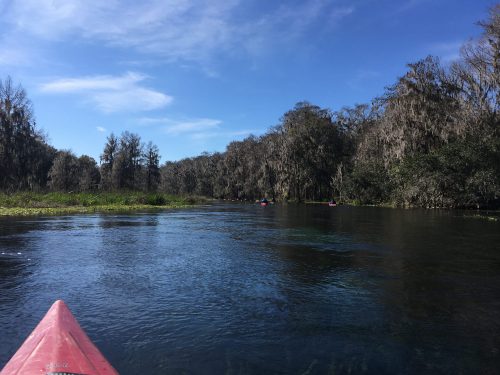
Nitrogen, in the forms of nitrate, nitrite, or ammonium, is a nutrient needed for plant growth. Although nitrogen is naturally occurring in the environment, it can cause overstimulation of aquatic plant and algae growth when introduced in excess to streams through sewage and fertilizers. Excessive growth of plants and algae can alter stream flow and use up dissolved oxygen as they decompose, compromising aquatic life and blocking light to deeper waters. Scientists have learned that nutrients in fresh water can fluctuate over the course of a 24 hour period, and therefore intermittent sampling of water fails to provide an adequate description of stream nutrient load. As such, high-frequency/high resolution measurement of water chemistry is essential to evaluate a stream’s nutrient concentration and ecosystem functioning. Cathy Chamberlin, PhD candidate in the University Program in Ecology working under the direction of Dr. Jim Heffernan, is focused on defining the role of nutrient fluctuations in assessing stream health. Cathy has conducted a synthesis of 134 sites monitored by the US Geological Service (USGS), the National Ecological Observatory Network (NEON) and university researchers through the “StreamPulse” project, and has analyzed continuous nitrate and hydrology data (equivalent to 285 years of nitrate with an accompanying 285 years of river discharge or water level data) in order to define the fluctuations of nutrients over a 24 hour period (known as “diel fluctuations”). Through defining patterns of amplitude and peak timing, Cathy has been able to deduce how nutrients shift over time in any given stream, whether seasonally, daily, or in response to disturbance. She is also asking whether diel fluctuations can be predicted by things such as region, season or river size. Key findings from this ongoing research are that water chemistry over the course of 1 day can be highly variable. The modal total nitrate concentration change over one day across all days and sites available through the USGS, NEON and StreamPulse projects is 0.2 mg/L (inclusive of over 100,000 data points and growing daily), while concentration changes of up to 20 mg/L can occur (10 mg/L is the legal drinking water limit). Cathy hypothesizes that only through examining continuous measurements of nutrients in our streams and rivers will we fully define the relationships between the watershed, water chemistry, nutrients, stream biota and stream health.
